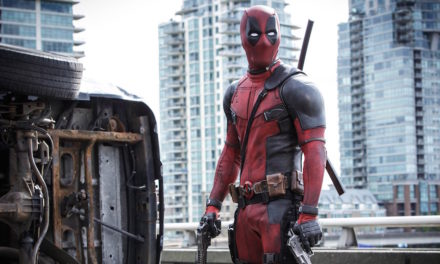I remember when we had Columbus Day off every year in elementary school. While I was lucky enough to have teachers and parents who highlighted the violent and historically-accurate context of Christopher Columbus and the colonization and enslavement of Native Americans, I know that many American children did not. For most, Columbus Day was a day to celebrate “American pride” and not having school. In 1989, Indigenous Peoples’ Day was instituted as a counter-celebration movement to celebrate Native American history, people and culture, instead of glorifying Columbus.
“Columbus Day is not just a holiday; it represents the violent history of colonization in the Western hemisphere,” Professor of American Indian Studies at Arizona State University Leo Killsback said in an interview with the History Channel.
On Oct. 8, just four days before Indigenous Peoples’ Day, the Michael C. Carlos Museum hosted a Zoom program in which Claudio Saunt, the author of “Unworthy Republic: The Dispossession of Native Americans and the Road to Indian Territory,” discussed his book, the history of Native American displacement and the modern-day impacts of such historical violence. Saunt was introduced by Craig Womack, an associate professor of English at Emory of Creek-Cherokee origin. Womack eloquently explained the significance of Saunt’s research into the violent history of Native American displacement and how Saunt’s writings were personally valuable to him. Prior to this Zoom program, I had never heard of Claudio Saunt, nor had I read his works, which highlights the gaping hole in American education about Indigenous American history.
Indigenous Americans have endured the unbridled celebration of Columbus Day and denial of their own history by white Americans for decades, but books, discussions and research such as Saunt’s represent a shift in the way white Americans can and should listen to these testimonies and history.
Sadly, art museums have been based on a history of looting in the art market, forced acquisition and the stealing of artifacts important to various cultures, especially Native American art. We cannot gloss over the painful history of Columbus or the role of other institutions in that oppression, with pilgrim hats, songs and American flags. We must educate ourselves. Involve ourselves. Acknowledge. Change.
Chiefly, as Emory students and current Georgia residents, we must also recognize the ways in which the state of Georgia greatly displaced and acted violently toward Native Americans. At the event, Saunt described the U.S Indian Removal Act as responsible for colonial violence and the Trail of Tears. He then tied such pain to modern-day issues of Indigenous American treatment and immigrant deportations.
Southern congressmen, especially in Georgia, outlined strategies to deport Native Americans by creating oppressive laws over the sovereign Indigenous nations located in the South at that time. Their motivation was mainly to gain access to fertile Southern land for slave plantations and agriculture that were previously occupied by such sovereign nations. The expansion of African slavery and violence toward Indigenous Americans went hand-in-hand, which I had only learned for the first time in this discussion. We had never covered these historical details — whether that be on Columbus Day or Indigenous Peoples’ Day — in school.
“We the people of Georgia meant we the white people of Georgia,” Saunt remarked during the virtual discussion.
Black Americans were viewed as inferior and animalistic compared to their white counterparts, and there was no place for Indigenous Americans in this world of white supremacy either. These vestiges of white supremacy that were responsible for acts of oppression like the Indian Removal Act are still felt in today’s political and social spheres, whether that be the Charlottesville, Virginia, riots in 2017 or U.S. President Donald J. Trump’s inability to condemn white supremacist groups during the 2020 Presidential Debate last week.
Following the timeline of his book, Saunt explained that by the 1820s, Georgia lawmakers pushed the Indian Removal Act to the House floor and passed the act into law in May 1830. Enslaved people now worked on plantations in this land and Indigenous Americans underwent expulsion, deportation and extermination. The simple term “removal” was, and is, insufficient in depicting the atrocities faced by those that were displaced. Saunt read one anecdote from the journal of an Indigenous American, in which they describe 500 Cherokees who were forced onto a disease-ridden steamboat headed away from their native lands. These people were torn from their children and families and forced into inhumane, unsanitary conditions.
There was no place for Indigenous Americans in Georgia or most other areas of the continental U.S. at this time, and in the present day, we still have not provided space or reparations for Indigenous Americans. The title of Saunt’s book, “Unworthy Republic,” comes from a letter describing the U.S.’ maltreatment of the Cherokee as the way in which an “unworthy republic” would treat others. This nation was and is an unworthy republic.
I left the Zoom program yearning to take action to repair, acknowledge and apologize for this historical and present-day violence and oppression of Indigenous Americans. As a white woman, I understand that I cannot write this article as the all-knowing savior of Indigenous Americans who will easily fix this deploy-rooted, historical, and systemic issues, but I humbly want to educate myself and take action where I can. I hope you all feel inspired to do as well.
Correction (10/21/20 at 4 p.m.): A previous version of this article stated the Carlos Museum has engaged in looting art. In fact, none of the Carlos’ art objects have ever come from forced sales.
Zimra Chickering (24C) is a born and raised Chicagoan who studies art history and nutrition science. She is also a student docent for the Michael C. Carlos Museum, Woodruff JEDI Fellow, educational committee chair for Slow Food Emory, and Xocolatl: Small Batch Chocolate employee. Zimra loves cooking, visiting art museums, photography, doing Muay Thai, drinking coffee, and grocery shopping. She uses writing as an outlet to reflect upon issues and oppurtunities within artistic institutions, and the unique ways in which food and art can act as communicators of culture.








Excellent review article Zimra! Feel free to connect here, if you’d like to be involved https://scholarblogs.emory.edu/nae/